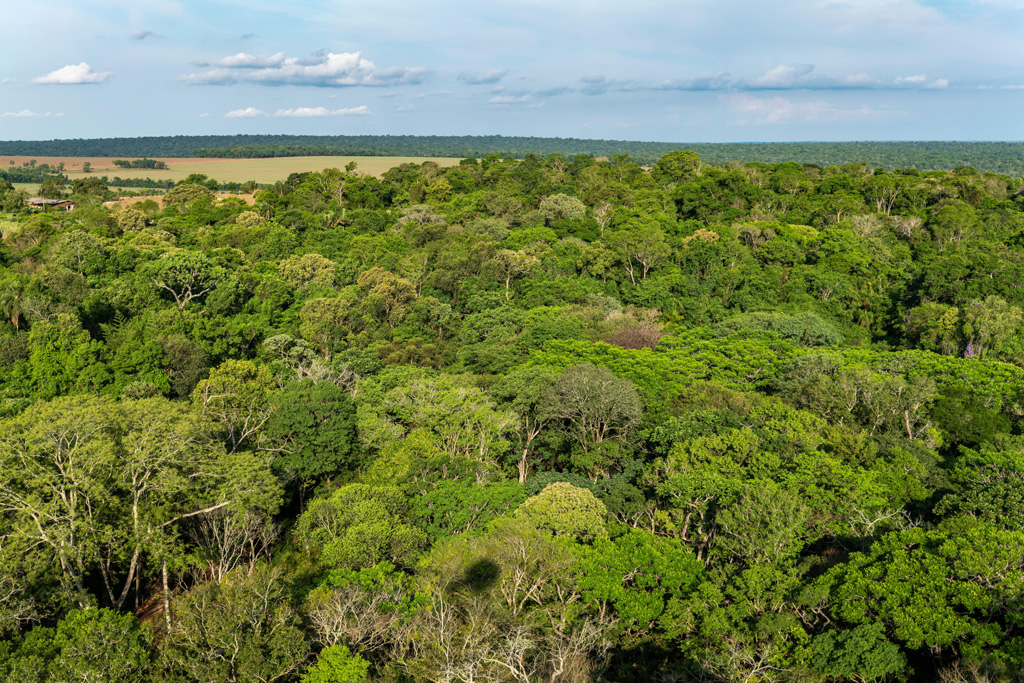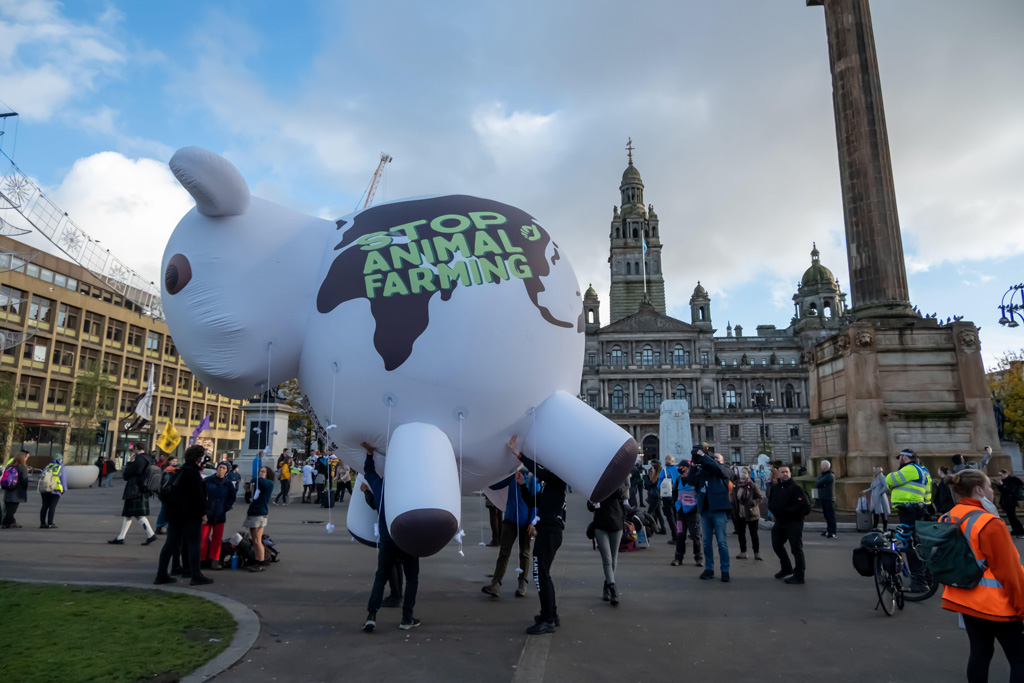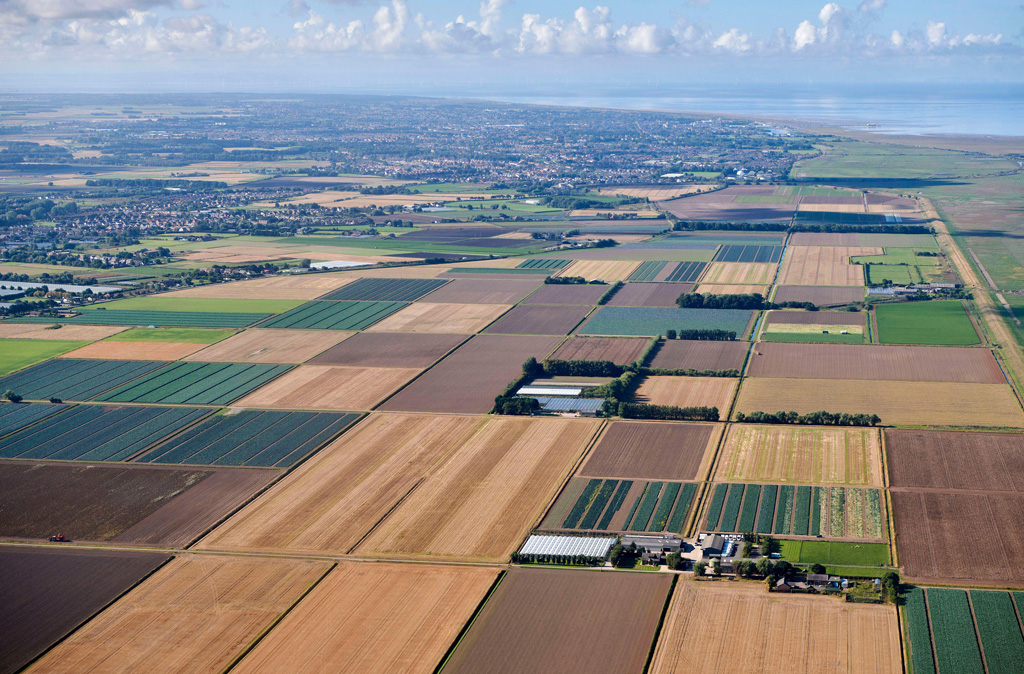
COP26: Key outcomes for food, forests, land use and nature in Glasgow
Multiple Authors
11.17.21Multiple Authors
17.11.2021 | 4:35pmComing into COP26 in Glasgow, nature was expected to feature heavily at the summit – one-fourth of UK prime minister Boris Johnson’s mantra of “coal, cars, cash and trees”.
Food systems – despite the growing recognition of their role as both a source of and solution to climate change – were not so prominently featured on the agenda.
In the formal negotiations, a reference to “agroecology” was included in a draft text for the first time – albeit in still-unresolved brackets, which will be discussed again at COP27.
Text on the polarising concept of “nature-based solutions” was included in an early draft of the Glasgow Climate Pact, only to be cut and replaced with text “emphasising” the need to protect and restore “nature and ecosystems”.
Nevertheless, food, land and nature did feature at the summit in a series of pledges, speeches, initiatives and coalitions over the course of the two weeks. These included promises of action and finance towards more sustainable supply chains and protecting nature and restoring ecosystems.
Some critics found the UK COP presidency’s reliance on major pledges and pacts to be a distraction from the nitty-gritty of the negotiations.
The “flurry” of announcements with no real details was a “systemic issue” at COP26, said Teresa Anderson, a climate policy coordinator at ActionAid International. She told Carbon Brief:
“We’re just bombarded and unable to really judge whether [the pledges] were helpful or useful.”
Below, Carbon Brief summarises the important takeaways from COP26 on food, nature and land use.
- Deforestation pledges
- Koronivia joint work on agriculture
- New climate pledges
- Agriculture announcements
- Nature-based solutions
- Article 6, REDD+ and removals
- The road to COP27
- COP15 and COP26 overlap
Deforestation pledges
Two major announcements concerning deforestation were made during the world leaders summit, which took place at the beginning of COP26.
The first, the Glasgow Leaders’ Declaration on Forests and Land Use, was signed by more than 130 countries promising to “wor[k] collectively to halt and reverse forest loss and land degradation by 2030”.
The second, a new Forest, Agriculture and Commodity Trade (FACT) Statement, was jointly led by the UK and Indonesia and aims to support sustainable trade between commodity-producing and -consuming countries.
The Leaders’ Declaration included:
- $12bn in public funding to “support work to protect, restore and sustainably manage forests” from 12 countries, to be delivered over 2021-2025.
- $7.2bn in private investment from corporate and philanthropic funds.
- Of that $19.2bn, at least $1.5bn earmarked specifically for protecting the forests of Africa’s Congo Basin.
- Of that $19.2bn, at least $1.7bn pledged towards supporting Indigenous peoples and local communities, and advancing their land tenure rights.
- A commitment from the chief executives of more than 30 financial institutions to divest from activities linked to commodity-driven deforestation.
The UK government press release announcing the declaration called the initiative an “unprecedented package of economic and political commitments”.
However, critics were quick to point out that the promises made in the declaration were similar to those made previously, including in the New York Declaration on Forests, which promised in 2014 to end deforestation by 2030.
Within days of the Leaders’ Declaration being released, conflict arose over its contents. Indonesia’s environment and forestry minister, Siti Nurbaya Bakar, called the pledge “clearly inappropriate and unfair” on Twitter.
(Indonesia had signed on to the pledge and, as a major forested nation, was one of the signatories touted in the UK government press release announcing the declaration.)
Reuters and other outlets reported Indonesia’s vice foreign minister, Mahendra Siregar, as saying that the country interpreted the commitment as “sustainable forest management…not end deforestation”.
The lack of clarity on this point – and the potential for differing interpretations – means the formal terms of the declaration “fell short”, said Peter Riggs, the co-coordinator of the Climate, Land, Ambition & Rights Alliance (CLARA). He told Carbon Brief:
“[No “net deforestation”] is not what we need. What we need is an expansion of forest cover. And what we need is an expansion of assisted and natural regeneration, and not plantation development.”
Vicky Tauli-Corpuz, a Kankana-ey Igorot activist from the Philippines who served as the UN special rapporteur on the rights of Indigenous peoples from 2014 to 2020, said the finance package announced as part of the Leaders’ Declaration “will have the potential of strengthen[ing] the protection of Indigenous peoples’ rights”.
However, she added that there must be careful monitoring of how these funds are accessed and used. Tauli-Corpuz told Carbon Brief:
“These donors should ensure that these funds can be directly accessed by [Indigenous peoples] and not through intermediaries, which usually eat up big portions of the fund. The donors should also support the establishment of an independent grievance mechanism which Indigenous peoples can use if funds are not used in the right way, meaning [if] their rights are violated.”

The FACT Dialogue was signed by 28 countries “representing 75% of global trade in key commodities” that contribute to deforestation, including Brazil, the US and the EU. The document provides a “roadmap for action” that identifies key steps to take actions and areas for further discussion within four thematics:
- Trade and market development
- Smallholder support
- Traceability and transparency
- Research, development and innovation
Riggs said he was “really happy to see” the dialogue surrounding sustainable commodities coming out of COP26 and that it was a “well-designed” part of the UK presidency’s strategy.
Separate from either of those pledges, Brazilian environment minister Joaquim Pereira Leite announced that the country was committing to end illegal deforestation by 2028.
US climate envoy John Kerry wrote on Twitter that the minister’s speech, which also included emissions reduction targets, “adds crucial momentum to the global movement to combat the climate crisis”.
But critics remain sceptical of Brazilian president Jair Bolsonaro’s commitment to the declarations and note that Bolsonaro has been pushing legislation to legalise deforestation – undermining the spirit, if not the letter, of the pledge.
BREAKING – Despite signing a zero deforestation pledge last week at #COP26 , Brazil sees highest deforestation on record for October, losing 877km2 of Amazonian forests. 11 months have seen record deforestation rates since Bolsonaro took office in 2019. pic.twitter.com/RHDlZhnuSb
— Erika Berenguer (@Erika_Berenguer) November 12, 2021
Koronivia joint work on agriculture
The Koronivia joint work on agriculture was established at COP23 in Fiji in 2017, with an aim of bringing discussions of agriculture into the UNFCCC and addressing agricultural issues through the lens of climate change.
This process was scheduled to finish at COP26, but as the informal consultation sessions wrapped up at the end of the first week, the text remained heavily bracketed, indicating many areas of disagreement.
The conclusions, as well as a “roadmap” of what the Koronivia process will look like going forward, will be debated at the next “intersessional” meeting of the UN climate process in June 2022.
While negotiators were unable to reach a final decision in Glasgow, their draft conclusions set a new goal of “recommending a draft decision for consideration and adoption” at COP27 in Sharm el-Sheikh next year.
The Koronivia roadmap lays out the topics and timing of the Koronivia work. As part of the process, workshops were held on the following topics:
- Methods for implementing the outcomes of the other Koronivia workshops.
- Methods for adaptation and building resilience.
- Improving soil health and soil carbon storage, including through improved water management.
- Improving nutrient use and manure management.
- Improving livestock management systems.
- The intersections of the socioeconomic and food security dimensions of climate change and agriculture.
One of the major sticking points in the Koronivia negotiations at COP26 was the proposed inclusion of a reference to “agroecology” – a term that encompasses a diverse range of agricultural practises with a focus on equity and ecosystem protection.
![Having considered the report of the first part of the intersessional workshop (Sustainable land strategies, and water management, including integrated watershed management to ensure food security), the SBSTA and SBI recognized [the importance of considering sustainable land and water management in systemic and integrated manner to deliver the full potential to safeguard food security taking into account the national and regional circumstances and the need to upscale national plans and strategies.] [the co-benefits for adaptation, mitigation and food security of implementing approaches for sustainable land and water management [including transboundary water cooperation][ including agroecology] [including sustainable agricultural practices] that are region such approaches.] They noted that specific, and the need to scale up approaches [render ecosystem services for both society and farmers] [have [multiple] benefits in the long run [for both society [(e.g. improved water quality, [[reduce [removing] salinity and desert farming,] greater biodiversity [,enhance adaptation] and carbon sequestration)] and farmers [(e.g. improved productivity and sustainability)]].] but require [financial] resources [such as [incentives] [finance]], capacity building and technology transfer.](https://www.carbonbrief.org/wp-content/uploads/2021/11/ragout2-1024x485.png)
The Africa group, the Least-Developed Countries and the EU were “three strong champions” in pushing for the text to mention agroecology, Anderson said. The US and India were among the countries opposed to its inclusion.
“We have some work to do with some of those sceptical countries”, she added.
The term remains bracketed in the draft text, meaning it is subject to agreement next year. Anderson told Carbon Brief:
“We’re encouraged that [agroecology is] in there in black and white, although in brackets. It’s the first time agroecology has been in negotiated texts in the UNFCCC. Given the huge contribution of agriculture – particularly industrial agriculture – to global emissions, it’s really important that we start to signal a shift.”

There was also disagreement during the consultations over whether or not mitigation – cutting greenhouse gas emissions – should be included alongside adaptation in the Koronivia text. The Earth Negotiations Bulletin reported that “some developed countries” pushed for the work to include mitigation, while “some developing countries” opposed it doing so.
There is “enthusiasm” among participants in the Koronivia process to design and hold a new set of workshops to continue to discuss other pertinent issues, such as agroecology, gender and hunger, Anderson said. She told Carbon Brief:
“We could ideally get good conclusions [at COP27] that can help shape the future of agriculture to address those challenges.”
New climate pledges
Many countries with significant forest cover and land and food footprints announced updated climate pledges days before or during COP26.
Australia – the world’s second largest cattle exporter and with the third largest agricultural landmass – announced its net-zero by 2050 strategy three days before COP26.
According to the new strategy, Australia estimates that emissions from agriculture would be reduced by 36% on 2005 levels by 2030, but plans to do this through “storing carbon in vegetation and soils” and “voluntary land-based offsets” that it says could “provide new revenue streams for farmers and improve agricultural productivity”.
Australia expects that “improved management” of a quarter of its crop, grazing lands and low rainfall rangelands could secure as much as 35-90m tonnes of carbon dioxide (MtCO2) per year through increased soil carbon storage.
Experts told Guardian Australia these estimates were scientifically impossible and were a “gross manipulation of data”.
In a speech at its pavilion in COP26, Brazil announced a new target to cut its emissions in half compared to 2005 levels by 2030. Critics of the current target say it should be viewed with skepticism, with one Brazilian opposition politician saying “no one trusts Brazil anymore”.
Analysts at Climate Observatory note that with an updated baseline, Brazil’s emissions target is basically unchanged from its first pledge to the Paris Agreement, under the previous administration.
Meanwhile, in a letter to the UN climate body dated 27 October, Brazil promised to update its NDC “in due course” to be “compatible with [its] new long-term objective” of achieving “climate neutrality” by 2050. This update had not been made at time of publication.
Mountainous, forested Nepal published its long-term strategy at the start of COP26 on 31 October 2021, with ambitious goals for its forestry sector. “With additional measures”, it says it can achieve net-zero forest degradation and reduce deforestation by 90% by 2030 – though it does not give a baseline – as well as cutting forest fires by 70%.
However, it plans to promote private forestry and bring 50% of its plantation area under the definition of forest, in order to meet its targets.

New Zealand published its updated NDC on 3 November, pledging to reduce its emissions by 50% “below gross 2005 levels by 2030”, corresponding to “a 41% reduction when managed using a multi-year emissions budget”.
New Zealand is one of the few countries in the world to have a net-zero by 2050 goal enshrined in domestic law, but this goal exempts methane from agriculture and waste.
While acknowledging that agriculture is responsible for 48% of its emissions, New Zealand said it “reserve[d] the right to adjust [its] selection of methodologies” for accounting for land-use emissions, “without reducing ambition”.
In meeting its emissions targets, “New Zealand intends to use international market mechanisms, cooperative approaches and carbon markets that enable trading.”
Its updated NDC was criticised by NGOs. “Without tackling agriculture – our biggest source of emissions – they’ll have to wimp out by opting for techno fixes and offshore options,” said Greenpeace, responding to the announcement.
NGO umbrella organisation CAN International awarded New Zealand with a “Fossil of the Day”, as its environment minister James Shaw said “just because a refreshing of the NDC has been asked of countries, it doesn’t mean we have to”. “This comes from a country that gives off the ‘greener than thou’ vibe at the drop of a hobbits hat,” said CAN.
Today’s 🏆#FossiloftheDay🦖 Award🏆 at #COP26 goes to:
— Climate Action Network International (CAN) (@CANIntl) November 11, 2021
🇬🇧 UK (1st) for completely ignoring the call for #lossanddamage finance👎
🇳🇿 New Zealand (2nd) for not having to revisit their NDC/2030 target, opposing limits on #Article6 carbon offsetting👎
Read: https://t.co/WqlWzCtlj0 pic.twitter.com/v0Vuq04mCI
Argentina, among the world’s biggest producers of beef and animal feed crops, published its updated second NDC on 2 November, pledging to slightly strengthen its emissions target from a limit of 359MtCO2e in 2030 down to 349MtCO2e.
An investigation by Greenpeace’s Unearthed before COP26 showed attempts by Argentina to push “repeatedly” for the removal or dilution of text about reducing meat consumption in the upcoming sections of the Intergovernmental Panel on Climate Change (IPCC) sixth assessment report, while BBC News reported that Argentina argued that some evidence shows that “meat-based diets can also reduce carbon emissions”.
Indian prime minister Narendra Modi used his speech to the leaders summit to announce a 2070 net-zero target and short-term renewable goals, but unlike its first NDC, no forestry or land-use targets were unveiled as part of his “five elixirs”.
The net-zero target is not available as an official document and it is still unclear if it covers only CO2 or all greenhouse gas emissions, the latter being significant for India’s large agricultural sector. It is yet to publish a new or updated NDC reflecting these elements.
India did not sign up to the deforestation pledge or to the methane pledge, officials telling Reuters this was for trade reasons. While Modi acknowledged that “climate change is a reality for Indian farmers” and is already changing cropping patterns, India stood against including the term “agroecology” in draft element texts for the Koronivia process.
Agriculture announcements
For the agricultural sector, COP26 held a series of major announcements – although many of these were pledges and initiatives that had been announced and discussed previously, only to be formally launched at the summit.
All of the announcements rely on voluntary commitments, with no enforcement mechanisms. Among these announcements were the Global Methane Pledge, the Agricultural Innovation Mission for Climate (AIM4C) and the Policy Action Agenda for a Just Transition to Sustainable Food and Agriculture.
Global Methane Pledge
One of the headline-grabbing announcements made at the summit was the Global Methane Pledge, a US- and EU-led initiative that has been garnering support for months but was not formally launched until COP26.
Signatories to the pledge – more than 100 countries in all, responsible for about one-half of global methane emissions – aim to reduce their methane emissions by 30% from 2020 levels by 2030.

“The greatest potential for cuts is, without any doubt, in the energy sector. This is why, next month, us, the European Commission, we will propose to regulate methane emissions. We will introduce rules to measure, to report, to verify methane emissions, rules to put limits on venting and flaring, and rules to detect leaks and repair them. And of course our Common Agricultural Policy is also increasing its focus on tackling methane emissions.”
As part of the pledge, the US and EU also announced that 20 philanthropic organisations had committed a combined $328m of funding to support emissions mitigation strategies.
However, some felt that the pledge focused too much on reducing emissions from fossil fuels and did not pay enough attention to livestock and other agricultural emissions.
In her speech announcing the pledge, European Commision president Ursula von der Leyen said:
US president Joe Biden also focused mainly on fossil fuel emissions reductions in his speech, announcing new rules regulating leaks from oil and gas pipelines. He did add that the US was “launching new initiatives” to reduce methane emissions from farms.
Patty Fong, the programme director for climate and health and well-being at the Global Alliance for the Future of Food, called the methane pledge “a good first step”. She told Carbon Brief:
“The fossil fuel campaigners have been working on this for ages, for much longer, so of course I understand that that’s where the focus is…Whereas when you touch on livestock, there is a recognition of methane and livestock, but actually, the solutions aren’t so easy to tackle in terms of policy and practises.”
(On a global basis, fossil fuel supply chains account for 35% of human-driven methane emissions, with 40% coming from agriculture and the remaining 25% from waste and other sectors.)
AIM for Climate
Another of the pledges – which had been touted at the UN Food Systems Summit in September – was the Agriculture Innovation Mission for Climate (AIM4C), a joint venture led between the US and the United Arab Emirates and signed on to by more than 30 countries, including Australia, Brazil, and Ukraine.
The launch of the pledge was accompanied by an announcement of a combined $4bn investment from the participating countries between 2021-2025 towards climate-smart agriculture and food systems innovation, although it is not clear whether or not those funds are new money.

In addition to the countries who have signed on, AIM4C is supported by a range of philanthropic funds, corporations, academic departments and non-governmental organisations.
According to its website, the initiative aims to increase investment in research and development in the following areas:
- Scientific breakthroughs via basic agricultural research through national-level government and academic research institutions.
- Public and private applied research, including through support to international research centers, institutions, and laboratory networks.
- Development, demonstration, and deployment of practical, actionable, and innovative products, services, and knowledge to producers and other market participants, including through national agricultural research extension systems.
AIM4C has been criticised by civil society groups for its over-reliance on technological solutions such as genetically modified crops, “climate-smart agriculture” and research and development, rather than sustainable farming methods such as agroecology. Anderson told Carbon Brief:
“[AIM4C] really seems like big industrial agriculture feeling the pressure from all the science saying that they’re problematic. And it’s a desperate PR attempt to try to stay relevant in an era of climate change by presenting themselves as the climate solution.”
Policy Action Agenda
A third major food system-related announcement made at COP26 was that of the Policy Action Agenda for a Just Transition to Sustainable Food and Agriculture, an effort led by the COP26 presidency, the World Bank and Just Rural Transition.
The agenda was supported by 16 countries “representing 11% of global agricultural emissions”, according to Just Rural Transition, including Ethiopia, New Zealand and the UK.
The text of the action agenda reads, in part:

Some of the proposed actions in the agenda include the repurposing of agricultural subsidies that incentivise harmful agricultural practices, investment in research and development for agricultural innovation and designing inclusive processes for consulting and communicating with stakeholders.
The agenda – and especially the focus on repurposing harmful subsidies – “is a start”, Fong said. She told Carbon Brief:
“It’s trying to create this momentum and, actually, acknowledgement that we need to repurpose away from harmful agricultural practices to more ecologically beneficial practices like agroecology and regenerative agriculture.”
Fong also noted that the issues of sustainable food systems and deforestation are inextricably linked, as the expansion of agricultural lands for livestock and soy production are major drivers of deforestation. She added:
“If we’re not looking at how we’re using public finance and incentive systems, it’s going to be very hard to sustainably address deforestation.”
Taken as a whole, the agricultural pledges made at COP26 were “a carefully orchestrated bombardment of announcements with very little backing”, said Anderson. She told Carbon Brief:
“That’s why we’ve taken an overarching sceptical approach, partly because it’s hard to know if any of these are real, but also partly because the whole initiative had no values, no principles, no criteria, about what real transformation in agriculture needs to look like.”
Nature-based solutions
Nature-based solutions (NBS) were one of the key action tracks of the UK presidency at COP26. The term found its way into titles of 15 COP side-events and myriad coalitions to drive more funding.
NBS are a set of loosely defined policy options that have gained currency in the last decade as solutions that harness nature for the benefit of society and, more recently, to “solve” anthropogenic climate change. These options broadly fall into three sets of actions: ecosystem conservation, restoration and land management techniques.
NBS were supposed to be the headlining act on “Nature Day” on the first Saturday, but the lack of any real or new initiatives ensured they were eclipsed by protests on the Global Day of Action, with many protestors deeming them “false solutions”.
NBS were a major priority for the UK government, but not for everyone, as the back-and-forth on their inclusion in what became the “Glasgow Climate Pact” demonstrated.
Even before the COP, the science and technology committee of the UK’s House of Lords wrote to Alok Sharma on 31 October, urging the UK and “Parties to acknowledge the role of nature-based solutions in climate change mitigation and adaptation in the COP26 decision text.”
On Wednesday 10 November, mid-way into the last week of negotiations, the UK presidency published its first draft of the cover text, including language around NBS.
In the very next draft early on Friday, direct reference to nature-based solutions were removed and replaced with “protecting, conserving and restoring nature and ecosystems” – language that echos the wording in the policy action agenda (see above).
“Forests” found their way into preamble text, and “terrestrial and marine ecosystems” were added, their importance now only important (not “critical important”) as “sinks and reservoirs” to “achieve the Paris Agreement temperature goal and protecting biodiversity”.
In the final text of the Glasgow Climate Pact, “conserving and restoring nature” gets another mention for “delivering benefits for climate adaptation and mitigation”. The evolution of this text is shown in the table below.
| 10 November 2021 – 05:51 | Preamble: Noting the importance of ensuring the integrity of all ecosystems, including the ocean and the cryosphere, and the protection of biodiversity, recognized by some cultures as Mother Earth, and noting the importance for some of the concept of ‘climate justice’ when taking action to address climate change. Mitigation: 39. Emphasizes the critical importance of nature-based solutions and ecosystem-based approaches, including protecting and restoring forests, to reducing emissions, enhancing removals and protecting biodiversity. |
| 12 November 2021 – 07:13 | Preamble: Noting the importance of ensuring the integrity of all ecosystems, including in forests, the ocean and the cryosphere, and the protection of biodiversity, recognized by some cultures as Mother Earth, and also noting the importance for some of the concept of ‘climate justice’, when taking action to address climate change. Mitigation: 38. Emphasizes the importance of protecting, conserving and restoring nature and ecosystems, including forests and other terrestrial and marine ecosystems, to achieve the Paris Agreement temperature goal by acting as sinks and reservoirs of greenhouse gases and protecting biodiversity, while ensuring social and environmental safeguards. |
| 13 November 2021 – 08:00 | Preamble: Noting the importance of ensuring the integrity of all ecosystems, including in forests, the ocean and the cryosphere, and the protection of biodiversity, recognized by some cultures as Mother Earth, and also noting the importance for some of the concept of ‘climate justice’, when taking action to address climate change. Mitigation: 38. Emphasizes the importance of protecting, conserving and restoring nature and ecosystems to achieve the Paris Agreement temperature goal, including through forests and other terrestrial and marine ecosystems acting as sinks and reservoirs of greenhouse gases and by protecting biodiversity, while ensuring social and environmental safeguards. |
| FINAL AGREED TEXT | Preamble: Noting the importance of ensuring the integrity of all ecosystems, including in forests, the ocean and the cryosphere, and the protection of biodiversity, recognized by some cultures as Mother Earth, and also noting the importance for some of the concept of ‘climate justice’, when taking action to address climate change. Recognizing the interlinked global crises of climate change and biodiversity loss, and the critical role of protecting, conserving and restoring nature and ecosystems in delivering benefits for climate adaptation and mitigation, while ensuring social and environmental safeguards. Mitigation: 38. Emphasizes the importance of protecting, conserving and restoring nature and ecosystems, including forests and other terrestrial and marine ecosystems, to achieve the long-term global goal of the Convention by acting as sinks and reservoirs of greenhouse gases and protecting biodiversity, while ensuring social and environmental safeguards. |
While rights groups were relieved that the first text on “undefined” “nature-based solutions” was changed to restoration and references to “social and environmental safeguards” added, they said this still did not go far enough.
“Reference to Indigenous peoples’ rights should also be included to prevent land grabs”, tweeted Sébastien Duyck of the Center for International Environmental Law.
Belize was among a handful of countries that supported retaining language around nature-based solutions in the cover text. On Friday afternoon, Megan Darby from Climate Home News reported that Peru and Costa Rica wanted to see language around NBS reinstated.
Other countries besides the UK that were pushing for its inclusion in the final COP26 text include Colombia, France, the EU, US, Singapore, Fiji, DRC, Mexico, Norway, Australia, Canada and Liberia.
Bolivia, as an observer noted, pushed back on its inclusion. It reportedly told a plenary:
“This text assumes that nature is only in service of people’s needs, but nature has an intrinsic value. It is sacred. That must be reflected. ‘Nature-based solutions’ was never negotiated here.”
Article 6, REDD+ and removals
Note 25/11/2021: This section has been amended to clarify the text on REDD+.
At COP26, negotiations resumed on Article 6 of the Paris Agreement – one of the last pieces of puzzle to finalise the Paris “rulebook”.
The four-year long negotiations over international cooperation, including carbon markets, are explained in detail in Carbon Brief’s 2019 Q&A and the final deal reached in Glasgow is summarised in Carbon Brief’s summary of key COP26 outcomes.
Significantly for the forests and land sector, the new rules exclude the use of legacy credits generated between 2015-2021 from reduced deforestation and forest degradation under the UN scheme known as REDD+.
Among the last “huddles” at COP26 holding up the penultimate plenary was one between the US, the Coalition of Rainforest Nations and others. This was reportedly an effort led by Papua New Guinea towards allowing the use of legacy REDD+ credits under Article 6.2, as well as fast-tracking the use of credits from 2021 onwards.
Looks like two huddles, one on loss and damage the other with Kerry and some rainforest nations, possibly over to delay of REDD+ activities (Article 6) #COP26
— Patrick Galey (@patrickgaley) November 13, 2021
While this effort failed, the COP26 decision leaves the door open to REDD+ schemes being used to generate Article 6.2 emissions reductions from 2021 onwards, subject to compliance with the wider Article 6 rules.
Another significant change in the new rules is the definition of “removals” under Article 6.4 that creates the international carbon market mechanism, where emissions cuts can be traded anywhere in the world by public or private entities.
In early drafts, “removals” were restricted to the agriculture, forestry and land-use sector. By the final decision, “removals” are more general and the reference to the land-sector has been removed. This could potentially now include negative emissions technologies and not just land-use.
Before going into details, what’s still NOT in the text is stronger ref to human rights, as demanded by NGOs, inc eg independent grievance procedurehttps://t.co/kKZpCvECIo
— Simon Evans (@DrSimEvans) November 11, 2021
The road to COP27
Fong told Carbon Brief that she had “no illusions” going into COP26 about the role that food systems would play in the summit. She said:
“Our agenda coming in was, ‘well, this COP is coming after the Food Systems Summit. There’s a real opportunity to raise the profile [of food systems]’ and it was a real opportunity to galvanise the food systems community.”
Even though food systems were not part of the official agenda, Fong said, she believes that COP26 did feature food and agriculture more heavily than previous summits. She added:
“It’s not like we’re going to change COP overnight to all of a sudden recognise food systems as a priority. It’s gonna be a step-by-step process and this is the first step.”
Looking ahead, discussion on the Koronivia joint work on agriculture – and what future work will occur in that space – is set to continue at both the meetings of the subsidiary bodies in Bonn in June 2022 and at COP27.
Also on the horizon is phase two of COP15 on the Convention on Biological Diversity, set for late April 2022 in Kunming, China. The Kunming Declaration, formally adopted at phase one of COP15, identifies biodiversity loss and climate change as “unprecedented and interrelated crises” and calls for “ecosystem-based approaches to address biodiversity loss, restore degraded ecosystems, boost resilience, mitigate and adapt to climate change”.
COP15 and COP26 overlap
Biodiversity conservation and climate change have many overlaps: climate change is the third largest driver of biodiversity loss, just as biodiversity loss and land-use change severely affect climate change, the latter responsible for a quarter of all anthropogenic emissions.
Net-zero targets or climate mitigation measures, such as large-scale renewable energy projects, if reliant on land-conversion techniques, could affect biodiversity and have severe consequences for Indigenous peoples.
Biodiversity and climate change both have their own conventions: the Convention on Biological Diversity (CBD) and the UN Framework Convention on Climate Change (UNFCCC) emerged from the same Rio Earth Summit in 1992.
They both have their own science-policy interfaces to assess existing knowledge and make policy recommendations: the IPCC and the Intergovernmental Science-Policy Platform on Biodiversity and Ecosystem Services (IPBES).
In December 2020, 50 IPCC and IPBES experts met virtually as part of the first-ever collaboration between the two science-policy bodies, in order to inform both COP15 and COP26 and identify possible joint activities.
The report establishes the need to see human society, climate and biodiversity as coupled systems. It warns that designing any climate mitigation or adaptation measures without considering other aspects of sustainability and socio-ecological contexts could lead to maladaptation, with direct and indirect negative impacts on nature and its contributions to people.

While metrics around climate have been relatively well-developed, biodiversity presents many complexities, challenges and knowledge gaps. The report calls for better data-sharing and tools to map biodiversity, climate and socio-economic scenarios together, so pathways to meet Paris, CBD and sustainable development goals can be developed.
COP25 in Madrid tasked its technical subsidiary body (SBSTA) chair to convene a dialogue on land and climate change adaptation, separate from other processes.
Ahead of COP26 and COP15, SBSTA published a summary report in June this year accepting that “there is limited engagement between work on agriculture, biodiversity and forestry and work on land adaptation to climate change”, in spite of these being interconnected issues.
Despite the significant emphasis on nature and biodiversity at COP26, it is still unclear how COP decisions will feed into negotiations at the second part of COP15 for biodiversity in Kunming, China next year.
There, countries are expected to negotiate a post-2020 Global Biodiversity Framework, touted to be the Paris Agreement of biodiversity, a 10-year consensus-based action plan to reverse nature loss, mobilise funding and set in place governance measures.
Climate pledges, long-term net-zero targets and nature-based solutions contained in them could have a significant ripple effect on biodiversity actions. How these are addressed at Kunming is vital to ensure that national actions are aligned on climate, biodiversity and development.
Nature-based solutions – among the most divisive issues at COP26 – were removed from COP decision text, just as they were deleted from the first draft of the Global Biodiversity Framework earlier this year.
Li Shuo of Greenpeace told Carbon Brief that COP26’s nature protection agenda was a recycling of old forest commitments, greenwashing and more “blah blah blah”. He said:
“A nature day was sidelined into the weekend. ‘Biodiversity’ and ‘nature’ are only namechecked in the COP decisions. The whole nature protection agenda, including the CBD process, has for a long time focused only on painting the desired outcome but not actually on getting there. We will not reach a strong deal at COP15 with this mentality.”

